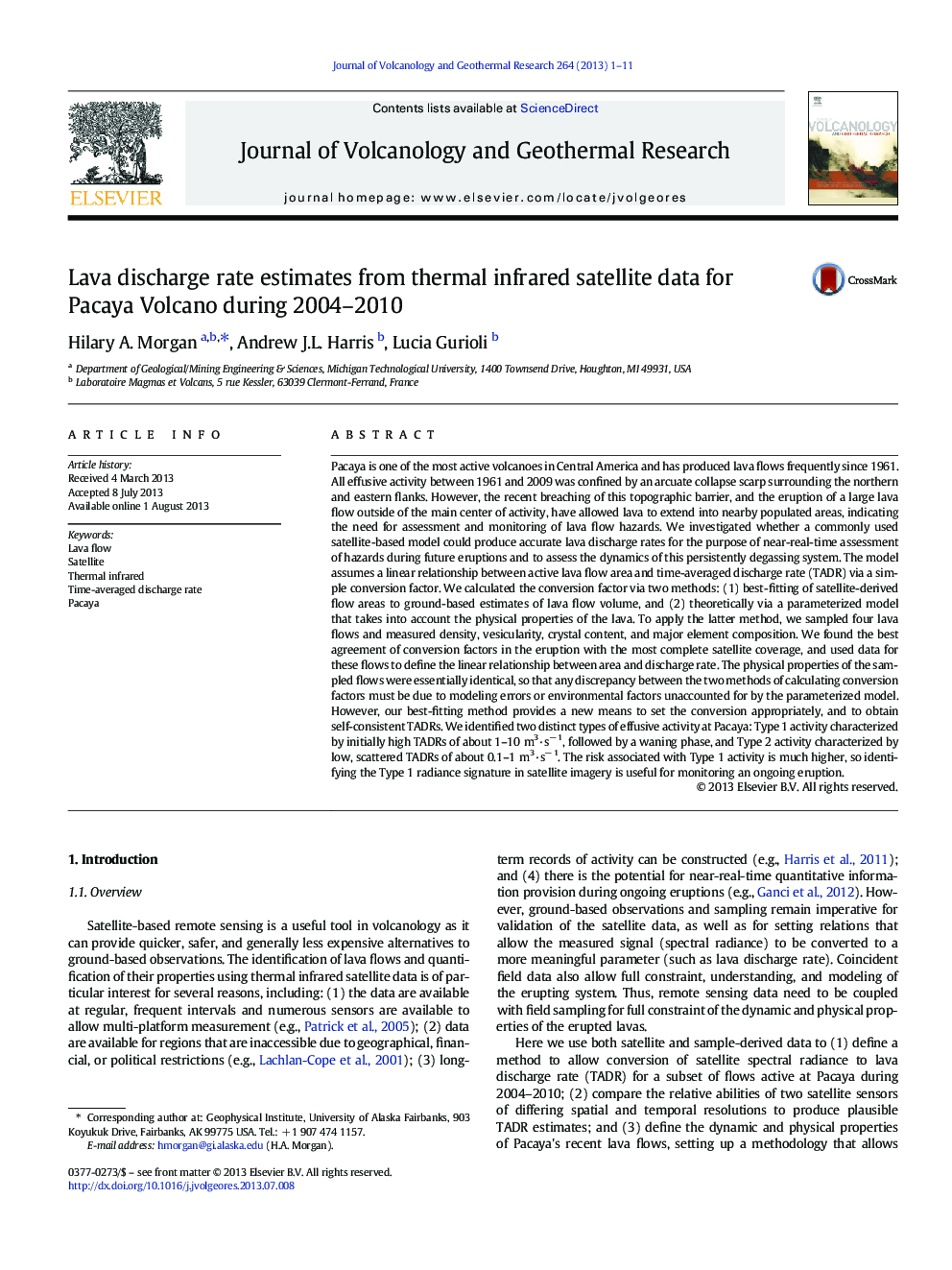| کد مقاله | کد نشریه | سال انتشار | مقاله انگلیسی | نسخه تمام متن |
|---|---|---|---|---|
| 6440103 | 1638357 | 2013 | 11 صفحه PDF | دانلود رایگان |
عنوان انگلیسی مقاله ISI
Lava discharge rate estimates from thermal infrared satellite data for Pacaya Volcano during 2004-2010
دانلود مقاله + سفارش ترجمه
دانلود مقاله ISI انگلیسی
رایگان برای ایرانیان
موضوعات مرتبط
مهندسی و علوم پایه
علوم زمین و سیارات
ژئوشیمی و پترولوژی
پیش نمایش صفحه اول مقاله

چکیده انگلیسی
Pacaya is one of the most active volcanoes in Central America and has produced lava flows frequently since 1961. All effusive activity between 1961 and 2009 was confined by an arcuate collapse scarp surrounding the northern and eastern flanks. However, the recent breaching of this topographic barrier, and the eruption of a large lava flow outside of the main center of activity, have allowed lava to extend into nearby populated areas, indicating the need for assessment and monitoring of lava flow hazards. We investigated whether a commonly used satellite-based model could produce accurate lava discharge rates for the purpose of near-real-time assessment of hazards during future eruptions and to assess the dynamics of this persistently degassing system. The model assumes a linear relationship between active lava flow area and time-averaged discharge rate (TADR) via a simple conversion factor. We calculated the conversion factor via two methods: (1) best-fitting of satellite-derived flow areas to ground-based estimates of lava flow volume, and (2) theoretically via a parameterized model that takes into account the physical properties of the lava. To apply the latter method, we sampled four lava flows and measured density, vesicularity, crystal content, and major element composition. We found the best agreement of conversion factors in the eruption with the most complete satellite coverage, and used data for these flows to define the linear relationship between area and discharge rate. The physical properties of the sampled flows were essentially identical, so that any discrepancy between the two methods of calculating conversion factors must be due to modeling errors or environmental factors unaccounted for by the parameterized model. However, our best-fitting method provides a new means to set the conversion appropriately, and to obtain self-consistent TADRs. We identified two distinct types of effusive activity at Pacaya: Type 1 activity characterized by initially high TADRs of about 1-10 m3·sâ 1, followed by a waning phase, and Type 2 activity characterized by low, scattered TADRs of about 0.1-1 m3·sâ 1. The risk associated with Type 1 activity is much higher, so identifying the Type 1 radiance signature in satellite imagery is useful for monitoring an ongoing eruption.
ناشر
Database: Elsevier - ScienceDirect (ساینس دایرکت)
Journal: Journal of Volcanology and Geothermal Research - Volume 264, 15 August 2013, Pages 1-11
Journal: Journal of Volcanology and Geothermal Research - Volume 264, 15 August 2013, Pages 1-11
نویسندگان
Hilary A. Morgan, Andrew J.L. Harris, Lucia Gurioli,